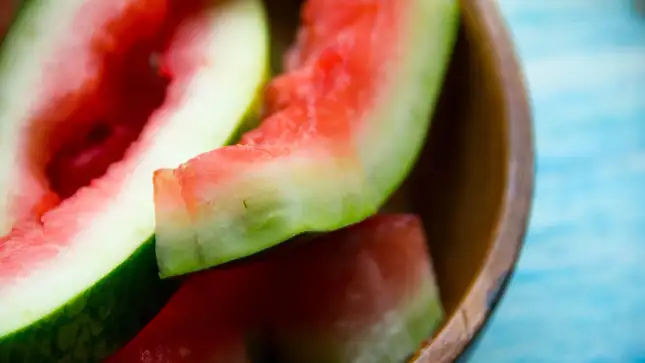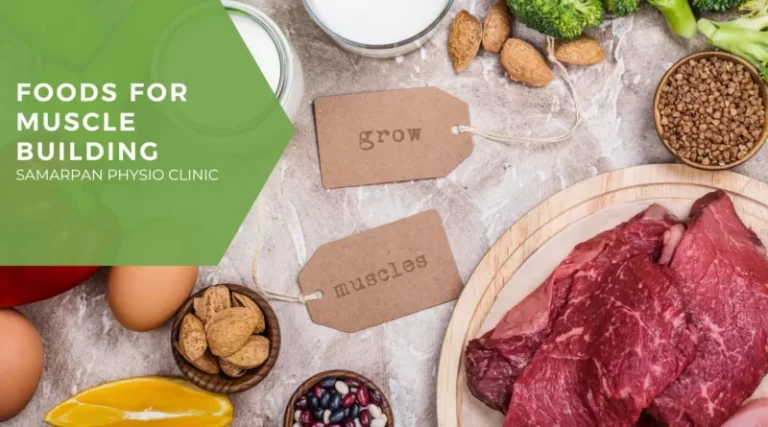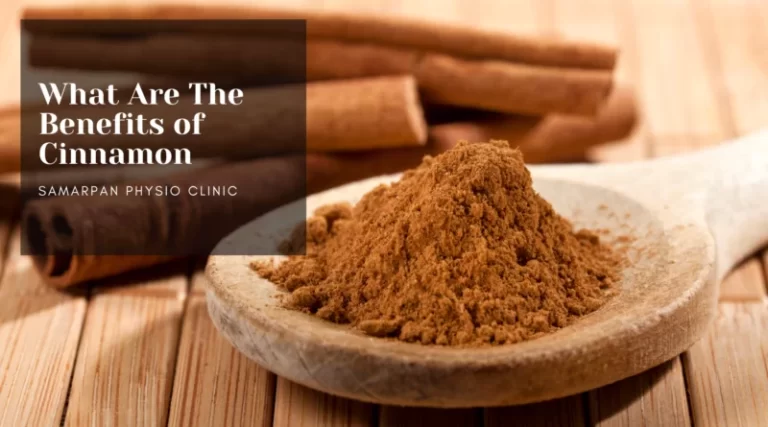Rind of Watermelon: Nutritious, Versatile, and Delicious
Table of Contents
What is the Rind of Watermelon?
The Rind of a Watermelon, often overlooked and discarded, is the tough, outermost layer of the fruit that encases its juicy, sweet flesh. While it may not be as immediately appealing as the vibrant red or pink interior, the watermelon rind possesses its own unique set of characteristics and uses.
From pickles to salads, the watermelon rind has found its way into various culinary traditions and creative recipes, demonstrating that there’s more to this humble outer layer than meets the eye. In this discussion, we’ll delve deeper into the intriguing world of watermelon rinds, exploring their composition, nutritional value, and the diverse ways in which they can be enjoyed and utilized.
The majority of people remove the peels of this fruit in the trash without giving them a second thought, despite the fact that the peel contains a significant portion of the fruit’s nutrients. Along with all the nutrients contained in the delicious fruit, watermelon rinds also have higher levels of a number of antioxidants, minerals, vitamins, and active substances.
This hard peel is low in calories but high in potassium, zinc, vitamin C, and vitamins A, B6, and B6. With chlorophyll, citrulline, lycopene, amino acids, flavonoids, and phenolic compounds, watermelon rind is likewise loaded with nutrients.
Uses for Rind of Watermelon
One of the fruits with the most appropriately named is the watermelon. Watermelon contains 92% water from a reputable source. Additionally, it has a healthy quantity of potassium, magnesium, vitamins A and C, and other crucial elements.
The watermelon’s most popular part is its pink flesh, yet the entire fruit is edible, just like its related the cucumber.
Although watermelon rind can be eaten raw, there are different methods to cook it that can add a little flavor. For instance, handmade pickled watermelon rind is a favorite of many in the southern United States, according to Country Living. These pickles are delicious and surprisingly simple to make. To add a mild watermelon flavor to your summer beverage, the peels can also be juiced or blended. So this summer, keep in mind to use those peels effectively.
Even though the rind of a watermelon is packed with nutrients, most people just throw it in the dustbin. Antioxidants, minerals, vitamins, and certain active substances are abundant in it. Although these peels are low in calories, they are high in potassium, zinc, vitamin C, vitamin A, and vitamin B6. In addition, the peel of watermelon contains nutrients like chlorophyll, citrulline, lycopene, amino acids, flavonoids, and phenolic substances.
This fruit part contains significant amounts of the vitamins B6 and C. Pyridoxine, often known as vitamin B6, is good for the heart and may aid with premenstrual syndrome. Furthermore, it is required for the immune and neurological systems to function effectively. Similar to that, vitamin C promotes cardiovascular and immunological health in addition to other advantages.
Fruits like watermelon are rich in many essential elements. However, many people might not be aware that the rind—the green skin that protects all that delectable fruit from becoming contaminated with water—is entirely okay to consume.
Health Benefits of Watermelon Rind:
Vitamin A, C, potassium, and magnesium are all found in abundance quantity in watermelon rind. They also include a lot of fiber, which promotes better digestion and lowers cholesterol and blood sugar. Due to their high citrulline content, eating watermelon rinds has also been demonstrated to reduce blood pressure. Supplemental citrulline has been related to better blood circulation and heart health.
The watermelon rind has numerous health advantages. Following are a few advantages:
- Good fiber source: The fact that watermelon rind is a good source of fiber is another advantage. A high-fiber diet has a number of health benefits, such as the following:
- Fiber aids in the maintenance of regular bowel motions and may help lower the chance of developing colon illnesses.
- Blood sugar and cholesterol levels can be reduced with fiber.
- Fiber-rich foods make you feel fuller sooner and can help you reach and maintain a healthy weight.
- In the US, only 5% of persons consume the recommended daily amount of fiber. To increase your fiber intake, think about eating the rind!
- Helps in blood pressure regulation: A surprising amount of potassium is present in this rind, and this potassium works as a vasodilator to relax the blood vessels and arteries. Your risk of atherosclerosis, heart attacks, strokes, and coronary heart disease can all be decreased as a result.
- If your doctor advised you to lower your blood pressure, consume some watermelon, rind and all. Studies have shown that supplements containing watermelon extract can significantly decrease blood pressure in obese people.
- Supplements containing citrulline, however, are probably more efficient. The majority of studies show that supplements containing citrulline lower blood pressure in hypertensive individuals.
- Watermelon is a probable diuretic that is regularly prescribed for people with high blood pressure. Watermelon slices can be frozen intact for a delicious summer treat.
- Contains amino acids, which are beneficial to health
- Improves digestion
- Low levels of cholesterol
- Promote healthy skin: This fruit rind is rich in antioxidants, which can help to lessen the impacts of free radicals and reduce oxidative stress, which reduces the appearance of wrinkles, blemishes, and age spots as you get older. It also contains a respectable amount of lycopene and other flavonoids.
- Booster the immunological system: One cup of this rind contains more than 30% of your daily recommended intake of vitamin C, which can significantly strengthen the immune system because vitamin C helps to increase the development of white blood cells, the body’s first line of defense against diseases and external invaders.
- Loss of weight: Due to its high fiber content, this novel, low-calorie snack can help with weight loss efforts. This can make you feel satisfied and speed up metabolism, which can increase your body’s ability to burn fat passively and aid in weight loss.
- Pregnancy: Due to the high potassium level, several studies have discovered that the natural sugars in this rind may help to reduce morning sickness symptoms as well as part of the edema related to pregnancy.
- It might improve your workout: In addition to enhancing your performance in bed, citrulline may enhance your next athletic performance. The majority of the data, nevertheless, is anecdotal.
- Citrulline encourages blood vessel expansion. According to one study, supplements containing citrulline enhance the supply of oxygen to the muscles, potentially enhancing exercise performance.
- Try pickled watermelon rinds, a traditional southern dish, to get it naturally.
- Libido: Due to its effects on blood vessel constriction, which improves blood flow to your intimate areas and boosts your libido with your spouse, this rind is linked to boosting sexual performance.
- The rind of a watermelon isn’t nature’s Viagra, but some study suggests that it could benefit those who have mild to moderate erectile dysfunction. Citrulline, an amino acid that is abundant in the rind. It has the capacity to raise libido
- Taking L-citrulline supplements can enhance erections without many of the potential adverse effects connected with Viagra, according to one study.
- Consider rubbing some chili powder and lemon juice on the watermelon rind. Both additions are advantageous for your heart and other love organs, if that makes sense.
- Chronic Conditions: Free radicals can be neutralized by the lycopene and citrulline in this rind before they can mutate cells and cause chronic disease.
The capacity of watermelon rind to enhance skin appearance, boost the immune system, lower blood pressure, help with weight loss, and promote a healthy pregnancy are just a few of its most significant health advantages.
Summary
In the future, when cutting a watermelon think about saving the rind. It’s an easy way to boost your general health in a short amount of time.
FAQs
After eating a watermelon, drinking too much liquid might cause nausea, bloating, and diarrhea. To prevent these problems, it is preferable to refrain from drinking water.
Nutrition of Watermelon Rind: Vitamins A, C, magnesium, potassium, and potassium are abundant in watermelon rind. They also include a lot of fiber, which promotes better digestion and lowers cholesterol and blood sugar.
Watermelon rinds have less sugar and more fiber than the flesh.
As a result, watermelon rind, an agricultural waste, protects the kidney and liver from lead toxicity by enhancing antioxidant defenses, at least in part, through a route that is dependent on uric acid and nitric oxide.
The rinds are loaded of antioxidants, minerals, amino acids, and fiber. These bioactive substances might offer defense against cancer, diabetes, heart disease, and other degenerative diseases. If prepared properly, watermelon rinds can also be tasty.







